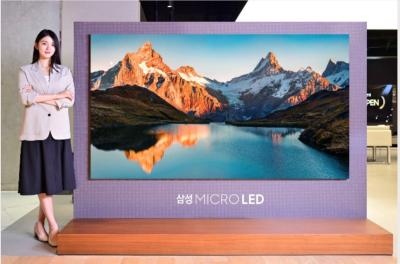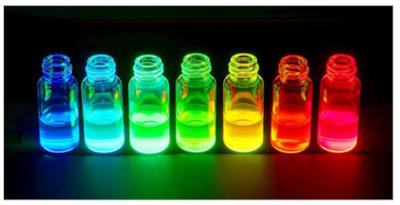Micro-LED (also known as mLED or µLED) is a display technology based on miniature LED devices that are used to directly create color pixels. Micro-LED displays are highly promising and have the potential to create efficient and great looking flexible displays, which could challenge even the most impressive high-end OLED displays. Micro LEDs are attracting significant attention as next-generation displays owing to their desirable characteristics such as low power consumption, high contrast ratio, high brightness, fast response speed, and long life span.

Perovskite materials can benefit the MicroLED industry in two ways: as materials for color conversion (using perovskite-based QDs) and in perovskite-based LED emitters. Much R&D work is taking place on both these fronts, and interest seems to be growing.
Perovskite QDs possess outstanding photoluminescence efficiency of up to 100%, high color purity and a high absorption coefficient. These materials demonstrate superb light photo- and electrical- conversion and are promising not only for applications in displays, but also UV and X-ray sensors, and lighting devices.

Perovskite QDs have a greater tolerance to imperfections than traditional metal chalcogenide quantum dots, and have excellent quantum yields of photoluminescence and high color purity that have already surpassed those of metal chalcogenide QDs. The bandgap in perovskite QDs is 3-5 times less sensitive to nanocrystal size change than in traditional quantum dots. The big advantage of this is that the optical properties of perovskite QDs are more reproducible from batch to batch in their synthesis. It is possible to scale up the production in large volumes, maintaining precise control of emission peaks (±1-3 nm) and achieving the best color purity (FWHM < 18-20 nm). The perovskite material nanocrystals are easy to synthesize in a colloidal suspension, and are also easily incorporated into optoelectronic devices using readily available processing techniques.
Perovskites also hold great promise as a platform for light-emitting diode (LED) applications. The external quantum efficiency (EQE) of perovskite LEDs (PeLEDs) has rapidly improved compared to state-of-the-art organic and quantum-dot LEDs. Using PeLEDs can also be a strategy to improve the cost burden of commercial microLEDs, as perovskite production processes are relatively low cost and simple.
Research on PeLEDs has gained strong momentum since the demonstration of room-temperature electroluminescence (EL) from halide perovskites in 2014. After only a few years of rapid development, researchers have succeeded in demonstrating external quantum efficiencies (EQEs) of over 20%, and internal quantum efficiencies (IQEs) of almost 100%. This is still an early stage effort, but a highly promising one.
As perovskite materials get ready to claim their place in the sizable display industry, don’t miss out on the recent news! stay updated on MicroLED-Info and subscribe to the MicroLED-Info weekly newsletter.